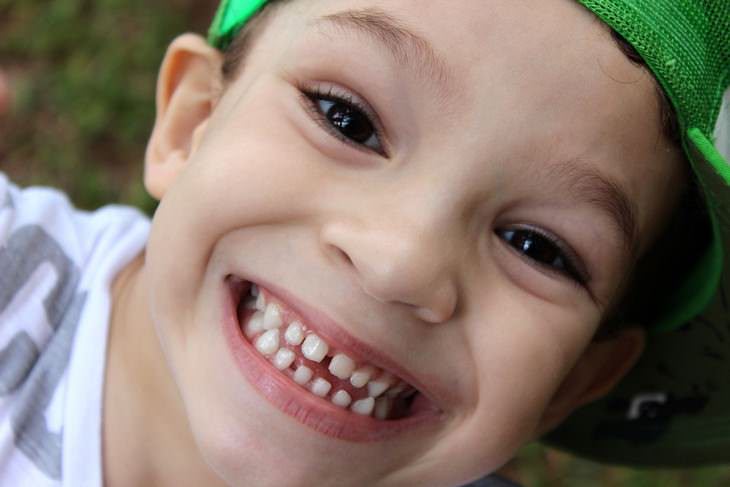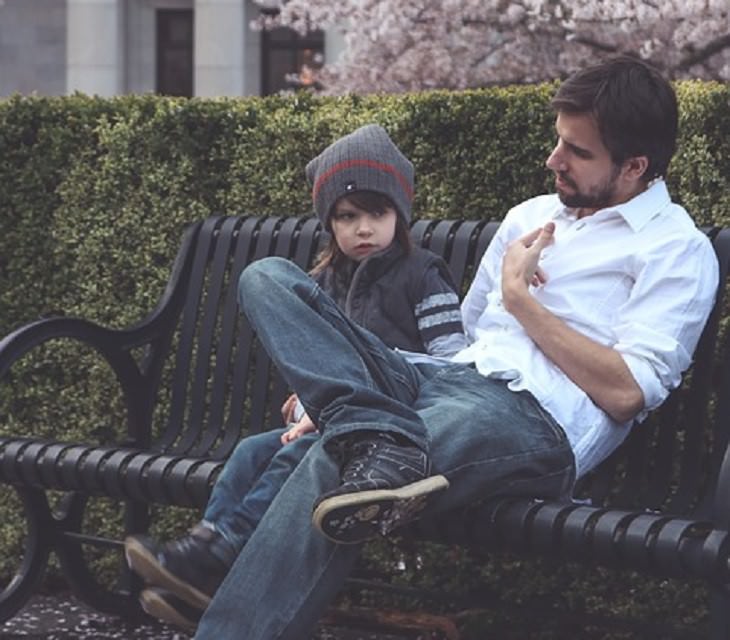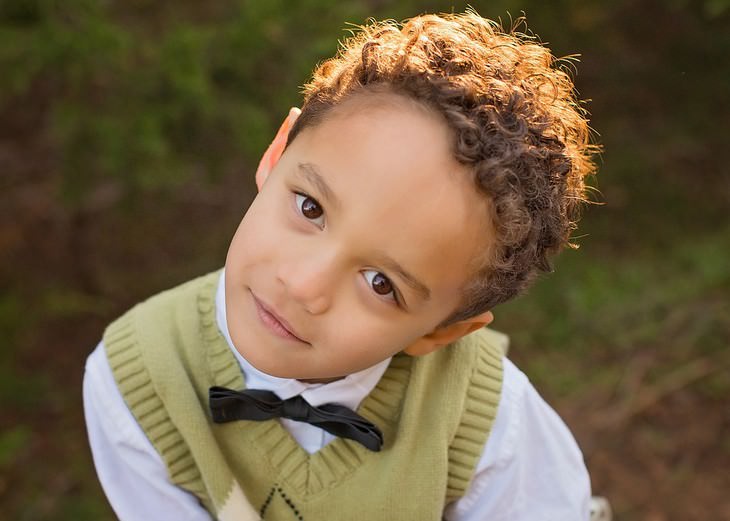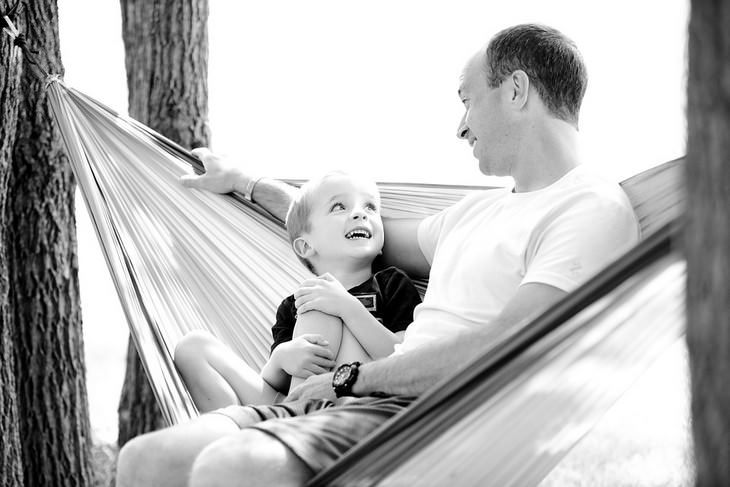
We experience many moments with our children that we would like to cherish and preserve in order to remember in the future, but on the other hand, there are also those we would also prefer to erase and forget. These moments occur when children behave in a negative way that surprises even their own parents, and when they are not willing to listen. Shouting, as many people know, doesn’t achieve the desired result and often aggravates the situation. With that being said, what can be done to stop children's negative behavior? Is there a solution to the problem? Fortunately, there is a very effective method that can stop it and prevent it from worsening, and with just a few simple steps you can implement it with your own children.

The one-request method for stopping negative behavior in children:
The One-Request method is designed to stop something negative that a child is doing, and its goal is to prevent escalation of their behavior and educate them for the future. According to this method, parents are to ask their children to stop what they’re doing only once, and if they don’t stop immediately, there will be consequences in the form of punishment that will make them understand that there is no room for such behavior. This method has several steps that parents should implement. The first step is to ask your child to stop their negative behavior only once, without further warnings.
When your child does something that they are not supposed to do or behaves negatively, ask them to stop this behavior only once, and tell them that if they don’t, their behavior will bring about disciplinary consequences in the form of punishment. If, for example, your child is jumping on the bed, tell them they have till the count of 3 to stop and if they don’t stop they’ll have a 5-minute time-out. This warning will be said once and once only without raising your voice because shouting, as we’ve mentioned, doesn’t actually help.

If your child stops the behavior, praise them for listening to you. You don’t have to shower them with compliments and praise, rather simply tell them that they behaved very nicely by listening to you and thank them. This way they’ll understand that positive behavior is preferable to negative behavior, which will encourage them to continue on this path. On the other hand, if after one warning your child has not stopped jumping on the bed, continue with the disciplinary measures that you warned about. In this case, a 5-minute time-out. Once the punishment is over, continue with the following steps to significantly reduce the likelihood that your child will repeat this behavior.
Whether they behave negatively or positively, children see parents as an authority figure, even if parents don’t feel this way most of the time. When you stand above your child, they are likely to feel threatened and enter a defensive mode, so it is advisable to lower down to their eye level when speaking to them. This way, you’ll have eye contact to help you deal with the situation, and your child will be more open to hearing what you have to say.
A personal approach to every topic has a great impact on the person you’re speaking to and continuing on from the previous section, this is a great way to further strengthen your personal and intimate appeal to your child. When there are disciplinary consequences after your child has not listened to one warning, refer to them by their first name so that they know you aren’t talking to anyone else, and of course, keep in close physical contact with them.

Yelling does not have a positive effect on children, who get defensive as soon as your tone rises. When you continue the line of punishment when your child isn’t listening to you, it is important that you continue the interaction calmly throughout all the steps, even after the punishment is over. For example, when you approach your child after their time-out has ended, try to keep calm and don’t shout - remember that your child is young and has no real-life experience. It will take your child time to learn how to behave in certain situations and it is your role as parents to teach them to do so patiently.
Children have shorter attention spans than adults, and they also find it difficult to understand abstract ideas in the way that we can. Therefore, it is important to keep a brief and concise message about disciplining your child so that they can understand and implement it in the future. Conversations that run on will cause your child to lose focus which will only frustrate you. Therefore, it is recommended to have short, simple-messaged conversations with them.

Education is a two-way street of conveying and receiving messages from both sides and it is important that you remember this after your child receives their punishment. So that you can be sure that your message is understood, and that your child feels that their voice is heard, let them express his opinion, feelings, and thoughts so that you can have a conversation. If only you talk, it will feel like preaching that children, like adults, are less open to. When your child speaks to you, try to keep your head and heart open and understand what they are trying to convey to you so that the both of you can come away from the punishment and the conversation with something in hand for the future.
The steps above are all important, but they are meaningless if your child doesn’t feel that they are being heard and understood. To do this, listen to what your child says and repeat it back with different words so that they know you’ve understood. For example, your child has hit his brother because he took a toy and says, "He always takes my toy." Understand the feelings behind your child's behavior and repeat back to him, "You feel that your brother always takes your toy and you do not have a chance to play with it." Even when your child misunderstands the situation, explain to them their misunderstanding only after they have expressed their feelings. If your child hit their sibling after he finished using the toy, then tell them, "You finished playing with the toy a few minutes ago, so now you can wait your turn till your siblings done playing with it." You can also schedule games in similar situations so that each child gets their turn, thus reducing arguments and fights among siblings.

When you approach your child after they’ve been punished, start your sentences with "I" so that they can understand the effects of their behavior on others. If your child jumped on the bed, don’t say, "If you jump on the bed, you could fall." Instead, say, "I'm very worried about you when you jump on the bed because you can fall and get hurt." These sentences will help you convey the message and impact of your child's behavior on the feelings of others in a way that does not feel aggressive or accusatory for your child.
The purpose of punishment is not only to show that there are consequences to your child's actions but also to teach them how not to act. This understanding will come only after your child understands the implications of their actions on others, and this is a particularly important learning process. We all develop compassion throughout our lives, and it starts at a young age where we see how certain actions of ours have a negative impact on others. After your child receives their punishment, tell them how their actions might affect others so that they understand that they aren’t alone in this world, rather they share it with other people who are affected by their actions.
